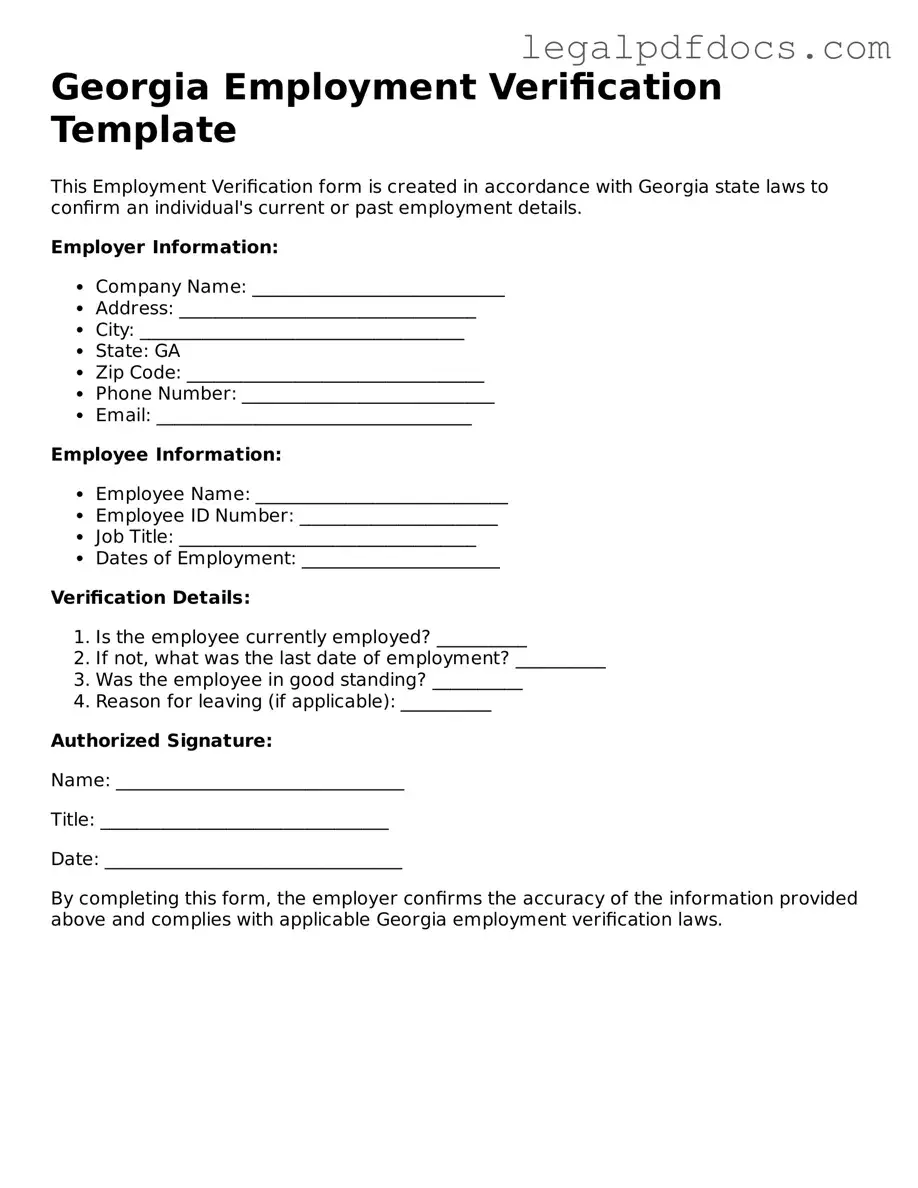Official Employment Verification Form for Georgia
The Georgia Employment Verification form is a document used to confirm an individual's employment status and details with a specific employer. This form plays a crucial role in various processes, including loan applications, rental agreements, and background checks. Understanding how to accurately complete this form is essential for both employees and employers alike.
To get started on filling out the Georgia Employment Verification form, click the button below.
Open Employment Verification Editor Here
